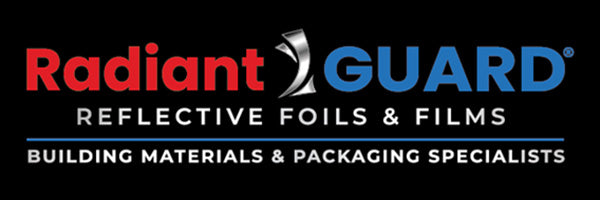What is the R-Value of Double Bubble Insulation?

Double bubble insulation is a type of reflective insulation that is made up of one or two layers of aluminum foil with two layers of polyethylene bubbles sandwiched in between. This type of insulation is most often used in crawl spaces, metal buildings and pole barns, as it is lightweight and easy to install.
The R-value of insulation is a measure of its ability to resist heat flow. The higher the R-value, the better the insulation. The R-value of double bubble insulation varies depending on the thickness of the insulation, the direction of heat flow, and the inclusion of enclosed dead air spaces in the assembly.
Factors Affecting the R-Value of Double Bubble Insulation
The R-value of double bubble insulation can be affected by a number of factors, including:
- The thickness of the insulation: The thicker the insulation, the higher the R-value. Most double bubble insulation products are 1/4-inch in thickness which equates to an R-Value of 1 for the product alone.
- The direction of the heat flow: All insulation materials are tested for their resistance to heat flow from one or more directions based on their intended application. R-Values for the same product vary based on the direction the heat is coming from; "down", "up", and "horizontal" heat flow.
- The presence of enclosed air gaps: Adding enclosed dead air gaps between layers of bubble insulation can increase the R-value of the assembly per the ICC International Building Code. The R-Value of a 1-inch enclosed dead air space averages at 3.5. Combine multiple dead air spaces in your assembly and you can easily increase your overall R-Value.
Reflectivity - More Important Than R-Value
While the R-value of double bubble insulation provides an indication of its resistance to heat flow, it is not the sole determinant of its effectiveness. Reflectivity plays an equally crucial role, particularly in reducing radiant heat transfer. Radiant heat, a significant contributor to heat loss or gain in buildings, is effectively stopped by the reflective surface of double bubble insulation. This reflective property is more important than the R-value in ensuring optimal thermal performance and energy efficiency. Therefore, when selecting double bubble insulation, prioritizing reflectivity over R-value is essential for maximizing its insulating capabilities and achieving the desired comfort and energy savings.
How to Install Double Bubble Insulation
Double bubble insulation is relatively easy to install. It can be installed in crawl spaces, metal and agricultural buildings and other unconditioned spaces.
To install double bubble insulation, follow these steps:- Cut the insulation to the desired size.
- Staple or screw the insulation to the framing members.
- Butt the edges of the insulation sections up against each other and tape the seams with reflective insulation tape.
Benefits of Double Bubble Insulation
Double bubble insulation offers a number of benefits, including:
- Lightweight: Double bubble insulation is very lightweight, making it easy to install and handle. This is especially beneficial for insulating attics and other hard-to-reach areas.
- Easy to install: Double bubble insulation is easy to install, even for do-it-yourselfers. It can be stapled or screwed to framing members, with the joints sealed with reflective tape.
- Moisture resistant: Double bubble insulation is moisture resistant, which makes it a good choice for insulating areas that are prone to moisture, such as crawl spaces and unconditioned buildings.
- Cost-effective: Double bubble insulation is a cost-effective way to insulate your crawl space or metal building. It is less expensive than many other types of insulation, and it can save you money on your energy bills.
Conclusion
R-Values for double bubble insulation products vary based on the thickness of the overall product itself. Most double bubble insulation products have an average R-Value of 1. But you can achieve a much higher R-Value for your application by the addition of enclosed dead air spaces. However, double bubble insulation shines in applications where radiant heat transfer needs to be controlled and therefore, reflectivity is a much better indicator of a double bubble insulation products effectiveness than its R-Value.Need further information? Contact RadiantGUARD today toll free (866) 528-8412 for technical advice or to place an order for double bubble insulation for your project.

